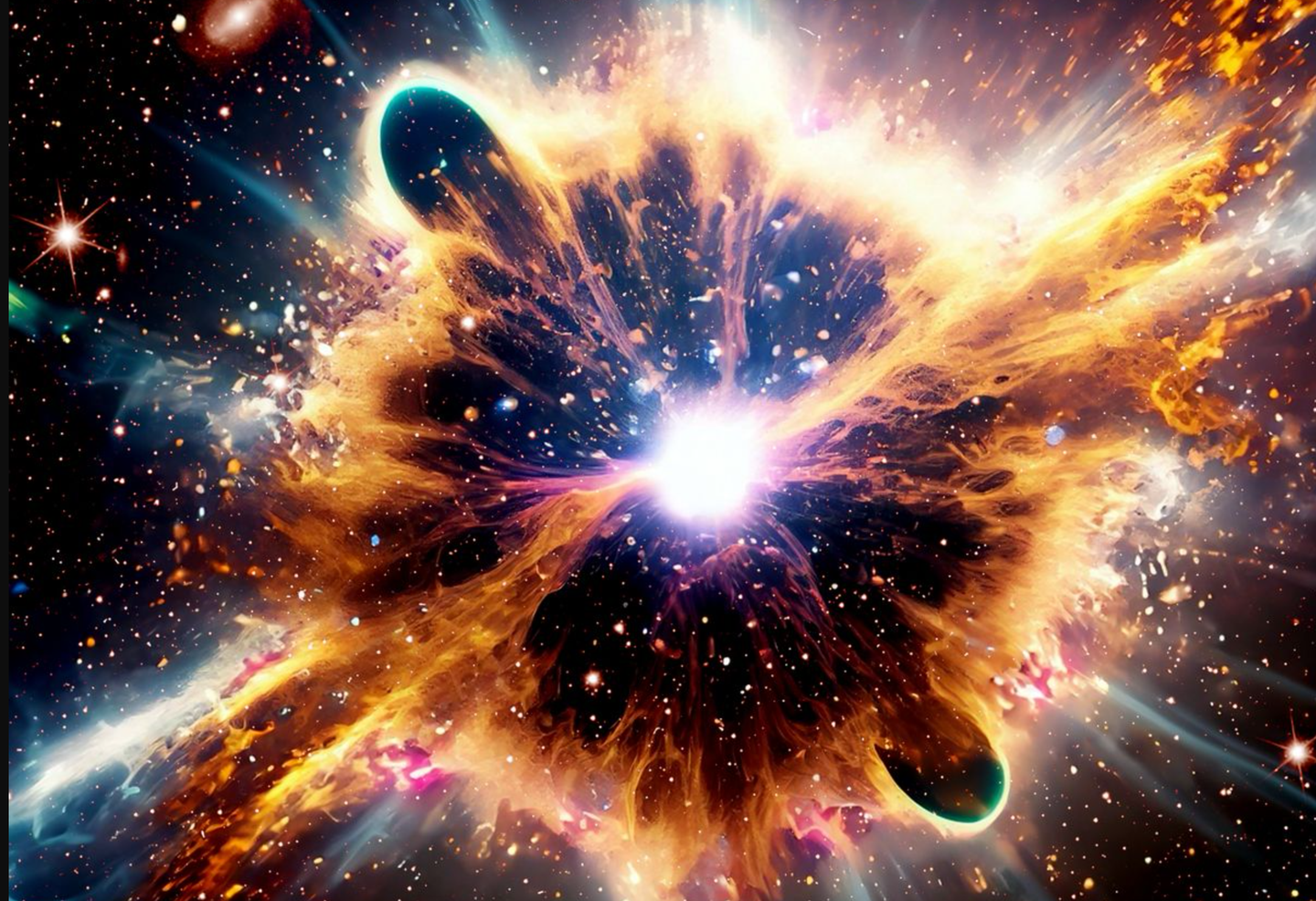Universe predicted to end in 20 billion years with a ‘Big Crunch’
A groundbreaking new study suggests the universe may end in a “Big Crunch” after 33.3 billion years, collapsing back into a single point.

Scientists predict the universe will collapse in a “Big Crunch” after 33.3 billion years, ending all cosmic expansion. (CREDIT: CC BY-SA 4.0)
For centuries, people have looked to the stars, asking how it all began—and how it might end. Now, thanks to a bold new study by physicists from Cornell University, Shanghai Jiao Tong University, and others, the timeline for the universe's final chapter might be clearer than ever.
Using data from the Dark Energy Survey (DES) and the Dark Energy Spectroscopic Instrument (DESI), scientists have proposed a future in which the universe doesn't expand forever but collapses into itself in an event known as the Big Crunch.
This massive cosmic reversal, predicted to occur when the universe is 33.3 billion years old, would mark the ultimate end of everything. Since our universe is currently 13.8 billion years old, that means we have about 20 billion years left on the clock. While that’s an unimaginably long time in human terms, it’s a finite future that defies the once-popular theory of eternal expansion.
The mystery of dark energy and a shrinking cosmos
The study challenges the long-held belief that the universe will continue expanding forever, driven by a constant dark energy force. Dark energy makes up roughly 70% of the universe and has been known to accelerate cosmic expansion. But recent measurements show it may not behave the way scientists originally thought.
The key finding comes down to the nature of dark energy’s equation of state, noted as w. If w equals −1, dark energy behaves as a constant, pushing the universe to expand endlessly. But if w is different from −1, the expansion may slow, stop, and even reverse.
That’s exactly what the latest data hints at. The DES and DESI projects suggest dark energy may be dynamic rather than constant, showing behavior that deviates from w = −1. This opens the door to new explanations—and one of the leading models involves a lightweight particle called an axion, combined with a negative cosmological constant. When added together, this forms the axion-dark energy (aDE) model.
Related Stories
According to the research team, the universe may grow to about 69% larger than it is now over the next 7 billion years. Then, expansion will halt. Gravitational forces and the influence of a negative cosmological constant will take over, causing the universe to collapse. Everything will eventually shrink to a single point.
The Big Crunch: a cosmic rewind
If this theory proves true, the end will mirror the beginning. Just as the universe is thought to have started with the Big Bang—an explosion from a hot, dense point—it may finish with a crushing collapse back to a similar state. The “Big Crunch” is the term scientists use to describe this scenario. In simple terms, the elastic fabric of space that’s been stretching for billions of years will eventually snap back.
The aDE model suggests that dark energy isn’t pushing space apart forever. Instead, its strength might fade, and gravity—along with a negative cosmological force—will eventually win. After a long period of slow contraction, the universe will enter a steep dive toward its own end.
The process won’t be sudden. The next 7 billion years will see the universe reach its peak size. The contraction will unfold over billions more, ending in the final moments when everything collapses into a singular state, much like the moment before the Big Bang.
Why this timeline is groundbreaking
Though cosmic timelines are rarely this specific, the researchers used precise data from multiple surveys to reach their estimate. The Dark Energy Survey, the Cosmic Microwave Background (CMB), Baryonic Acoustic Oscillations (BAO), and supernova (SN) observations all fed into the model. These data sets helped confirm that a dynamic form of dark energy—possibly involving axions—fits better than a constant force.
Their findings also show a preference for a negative cosmological constant, Λ < 0. This value is crucial in determining whether the universe ends in a freeze or a crunch. If Λ were positive or zero, expansion would likely continue forever. But in the aDE model, Λ is negative, which favors a collapse.
With the best-fit parameters from the combined data, the scientists estimate the universe has a finite lifespan of 33.3 billion years, with 20 billion years remaining.
Dr. Zhong-Zhi Xianyu, one of the study’s co-authors, explains, “It is encouraging that the lifespan of the universe can be quantitatively determined.” However, he and others stress that the model still has uncertainties due to limited observations and evolving theoretical frameworks.
Testing the prediction and what lies ahead
Despite the excitement, researchers caution that the model is still just that—a model. The measurements from DES and DESI offer a strong suggestion that dark energy may be dynamic, but more work is needed. Future projects, such as the Euclid mission by the European Space Agency and the Nancy Grace Roman Space Telescope from NASA, will provide sharper data on dark energy’s behavior.
If the aDE model holds up under this scrutiny, scientists will be able to refine their estimates and maybe even pinpoint more details about the universe’s final phase.
What makes this study stand out is not just the dramatic prediction, but how close we are to verifying or disproving it. For the first time, there is a testable timeline for the fate of the cosmos. The precision of 33.3 billion years may not hold up forever, but it’s a scientific leap forward from past theories based on guesswork or loose assumptions.
Even if the Big Crunch is confirmed, it’s far from an immediate concern. By then, the Sun will have long burned out, Earth will be uninhabitable, and the Milky Way will have merged with the Andromeda galaxy. In cosmic terms, humans live in the early morning of the universe.
Still, this research reshapes how we view the arc of time. It takes the idea of cosmic destiny out of the realm of philosophy and puts it squarely into science.
Rewriting our place in the universe
This potential end of the universe offers a powerful reminder of just how much remains unknown. While 20 billion years seems distant, knowing that there’s an end date—no matter how far away—forces us to rethink cosmic permanence.
Dark energy, despite making up most of the universe, remains one of science’s greatest mysteries. Yet with each new dataset and theoretical breakthrough, scientists inch closer to understanding its nature. Whether the universe ends in fire, ice, or collapse, the work done now sets the path for tomorrow’s discoveries.
As researchers continue to test their models and collect more data, they bring clarity to questions that once seemed impossible to answer. The Big Crunch may still be a theory, but it's one grounded in real science and guided by growing evidence. For the first time, we may not just wonder how the universe will end—we may finally know.
Note: The article above provided above by The Brighter Side of News.
Like these kind of feel good stories? Get The Brighter Side of News' newsletter.



